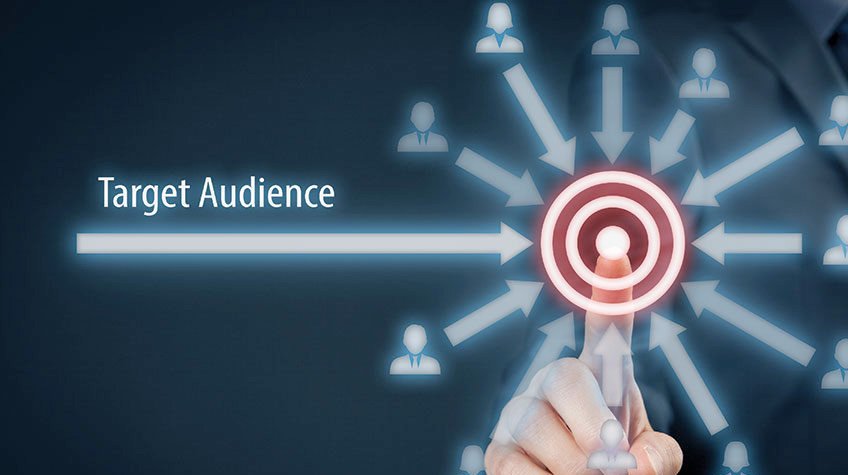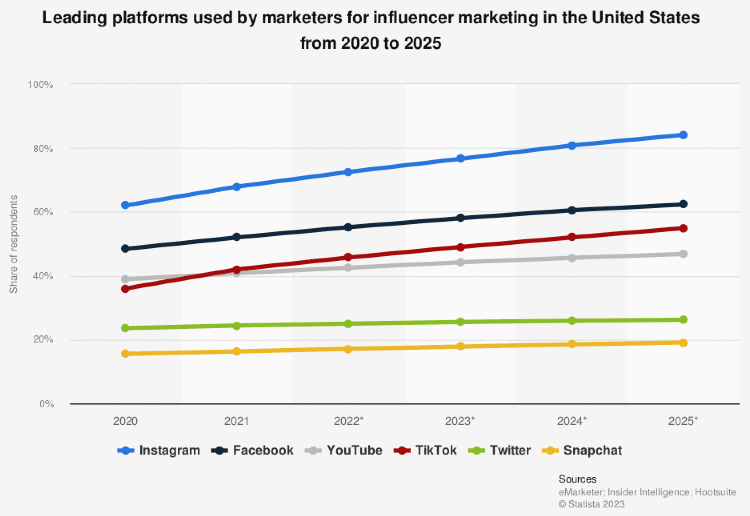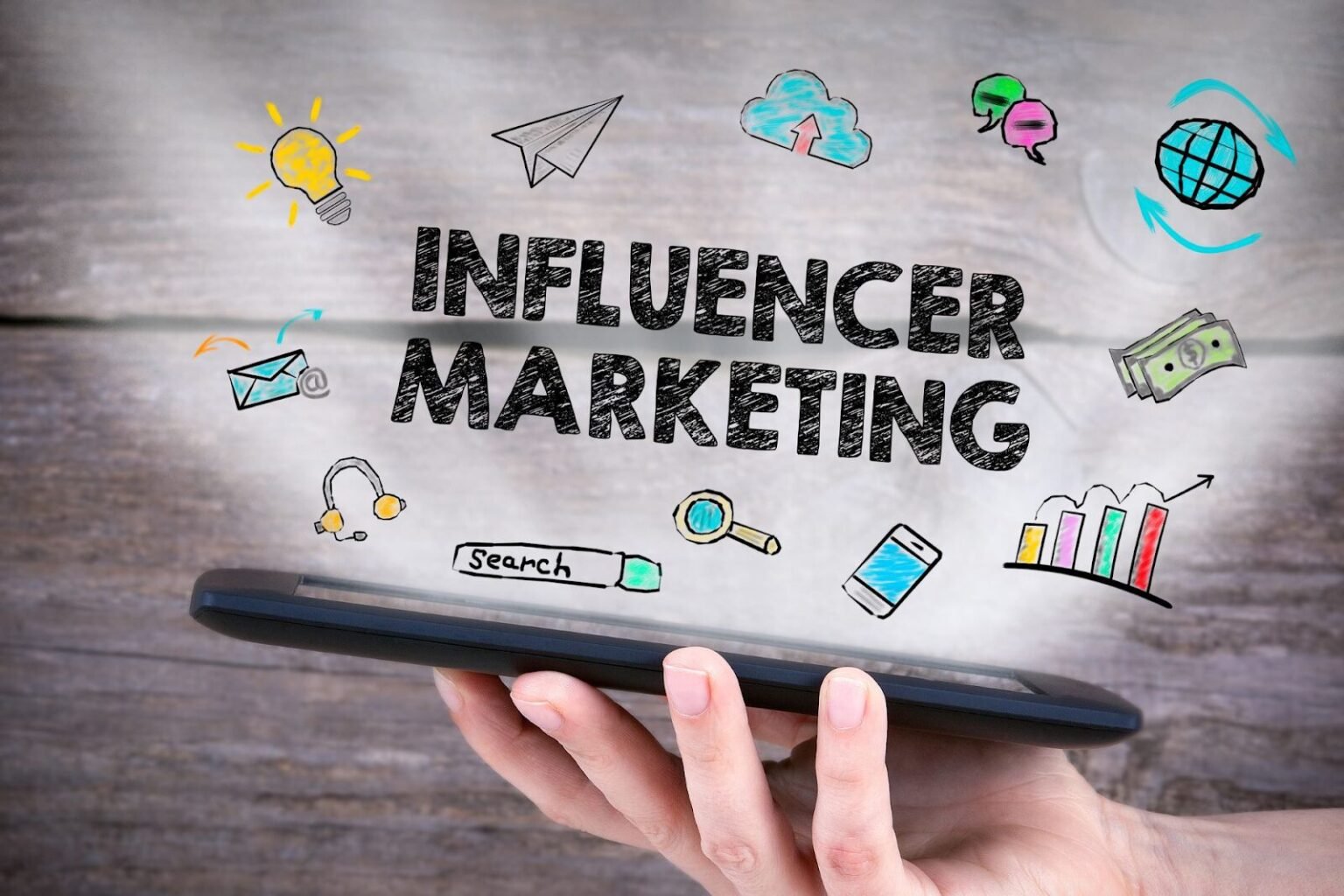In the past decade, digital marketing has undergone a seismic shift, with social media emerging as a dominant force in consumer behavior and brand communication. Among the various marketing tactics that have risen in popularity, influencer marketing has proven to be one of the most effective and impactful. Influencer marketing involves partnering with individuals who have a significant following on social media platforms to promote products, services, or brands. With the rise of platforms like Instagram, TikTok, YouTube, and Twitter, influencers have become key players in the marketing ecosystem, shaping consumer behavior and brand perceptions in unprecedented ways.
This article delves into why influencer marketing is not just a passing trend but the future of brand promotion. It will explore the dynamics of influencer marketing, the factors that contribute to its effectiveness, the benefits it offers over traditional advertising methods, and why businesses should embrace this strategy to remain competitive in the rapidly evolving digital landscape.
Key Takeaways
- Influencer Marketing: Allows brands to connect with target audiences through trusted and authentic voices.
- Audience Engagement: Influencers foster high levels of engagement and trust, leading to higher conversion rates.
- Cost-Effective: Micro-influencers offer affordable opportunities for brands with smaller marketing budgets.
- Measurable Success: The effectiveness of influencer campaigns can be tracked through various metrics, allowing for data-driven optimization.
- Future Trends: Video content, authenticity, live streaming, and augmented reality are key trends shaping the future of influencer marketing.
What is Influencer Marketing?

Influencer marketing is when an individual with a substantial following works with a brand to help market products. Influencers seamlessly weave brand promotions into their content, which makes the advertisements less intrusive and more appealing to the audience.
This marketing approach thrives on trust, which is its greatest strength. Unlike traditional advertisements that use celebrity endorsements, Instagram and Snapchat Influencers use influencer marketing to promote goods, which is much simpler and easier. A fitness influencer can promote a brand of supplements to their audience while a technology vlogger can promote the latest smartphones to their followers. The major component that is different is the personal touch that an influencer gives while speaking about a particular brand which makes their impact much stronger.
The Rise of Influencer Marketing: A Shift in Brand Promotion
Traditional forms of marketing, such as television commercials, radio ads, and print advertisements, were once the go-to methods for promoting products and services. However, the digital age has brought about significant changes in how consumers engage with content. With the advent of social media, consumers no longer rely solely on brand messages through conventional media channels. Instead, they seek out authentic, relatable content that resonates with their personal values and interests.
Influencers—individuals who have amassed large followings on social media platforms—have become powerful gatekeepers of content. Their ability to connect with audiences in an authentic, personal way allows them to influence purchasing decisions far more effectively than traditional advertisements. Influencers are often seen as more trustworthy and relatable than brands themselves, leading to higher engagement rates, greater credibility, and more effective marketing campaigns.
The Power of Social Media and Consumer Behavior
One of the key drivers behind the success of influencer marketing is the rise of social media. According to recent statistics, as of 2024, there are more than 4.7 billion social media users worldwide, with platforms like Facebook, Instagram, TikTok, and YouTube serving as primary channels for content consumption. Social media has revolutionized the way consumers interact with brands, providing a more direct and personal connection between companies and their target audiences.
Consumers today are bombarded with advertisements at every turn—whether it’s through television, radio, or online banners. However, research shows that people are less likely to trust traditional advertisements compared to recommendations from influencers. According to a 2023 survey by Nielsen, 92% of consumers trust recommendations from individuals over traditional forms of advertising, and 74% of people use social media to guide their purchasing decisions. These statistics highlight the growing influence of social media figures on consumer choices and underscore the value of influencer marketing as a modern solution to reaching and engaging with target audiences.
Building Authenticity Through Influencers
Authenticity is a crucial factor in today’s marketing landscape. With growing skepticism about corporate messaging, consumers are increasingly seeking brands that align with their personal values and interests. Influencers, by their very nature, excel at building genuine, trust-based relationships with their audiences. This relationship is often based on shared values, interests, and experiences.
Unlike traditional advertisements, influencer content often feels more personal and authentic. Influencers typically showcase products in real-life settings, integrating them into their everyday lives rather than presenting them in a polished, scripted manner. This creates a sense of relatability that resonates with consumers. Whether it’s a beauty influencer sharing a makeup tutorial or a fitness influencer recommending workout gear, consumers are more likely to trust product recommendations when they feel the endorsement is coming from someone they relate to and admire.
Targeting the Right Audience

Influencer marketing allows brands to reach highly targeted, niche audiences that may be difficult to access through traditional advertising channels. Influencers often specialize in specific niches, such as beauty, fitness, technology, gaming, fashion, or travel, which allows brands to connect with an audience that has a genuine interest in their products or services.
For example, a skincare brand may collaborate with beauty influencers who have established themselves as authorities in skincare and beauty. Similarly, a tech company may work with gaming influencers who have large followings of tech enthusiasts. By partnering with influencers who have a direct line to the brand’s ideal audience, companies can ensure that their marketing efforts are focused on those most likely to convert into customers, rather than wasting resources on broad, generalized campaigns.
Moreover, the ability to tailor campaigns to specific demographics—such as age, gender, location, and interests—allows for more personalized and relevant brand experiences. This level of precision leads to higher conversion rates and more effective campaigns.
Engagement Over Reach: The Importance of Interactivity
One of the key reasons influencer marketing is so effective is its ability to drive engagement. Unlike traditional advertisements, which rely on passive consumption, influencer content encourages interaction between the influencer and their audience. Social media platforms like Instagram, YouTube, and TikTok provide opportunities for followers to comment, like, share, and even engage in real-time conversations.
This level of engagement fosters a sense of community, where followers feel involved in the content and the brand’s message. When influencers promote a product, their followers are more likely to engage with the content through likes, comments, and shares, which increases the brand’s visibility and reach. Furthermore, this engagement often leads to higher conversion rates, as users are more inclined to purchase products that are recommended by influencers they interact with.
Types of Influencers and Their Characteristics
| Type of Influencer | Followers | Engagement Rate | Cost | Best for |
|---|---|---|---|---|
| Mega Influencers | 1M+ | Low to Medium | Very High | Large brand campaigns, global reach |
| Macro Influencers | 100K – 1M | Medium | High | Brand awareness, product launches |
| Micro Influencers | 10K – 100K | High | Medium to Low | Niche markets, community-based marketing |
| Nano Influencers | 1K – 10K | Very High | Low | Local brands, highly targeted campaigns |
This table helps differentiate the types of influencers based on follower count, engagement rate, cost, and the types of campaigns they are best suited for.
Cost-Effectiveness and Measurability
Compared to traditional advertising, influencer marketing can be a cost-effective strategy. While celebrity endorsements can be expensive, there is a growing trend of working with micro-influencers (those with smaller but highly engaged followings). These influencers often offer a more affordable alternative while still delivering high levels of engagement and conversion.
Micro-influencers, for instance, tend to have more intimate and personalized relationships with their followers, which can lead to higher levels of trust and, ultimately, a more significant impact on brand awareness and sales. For brands with limited marketing budgets, influencer marketing offers a great opportunity to achieve a high return on investment (ROI).
Moreover, the impact of influencer marketing can be easily tracked and measured using various social media analytics tools. Brands can monitor engagement metrics such as likes, comments, shares, and click-through rates to assess the effectiveness of their campaigns in real-time. This data-driven approach makes it easier to optimize campaigns and maximize results.
Define Your Marketing Goals
You can’t achieve success if you don’t set goals and track results to ensure your strategy remains consistent throughout the campaign. While every brand has its own goals and desires, you might consider goals such as:
- Grow brand awareness
- Increase social media following
- Increase engagement
- Enhance your marketing funnel
- Launch a new product or event
- Increase consumer purchases
- Improve search engine optimization
Your budget will help determine your approach. Expect to pay influencers based on their follower count, engagement rates, and the number of sponsored posts you place.
The Future of Influencer Marketing: Trends to Watch

As social media continues to evolve, so too does the landscape of influencer marketing. Several trends are expected to shape the future of this marketing strategy:
Video Content Dominance
Video content has become increasingly popular, with platforms like YouTube, Instagram Reels, and TikTok leading the charge. As video consumption continues to rise, influencer marketers are increasingly turning to short-form and long-form video content to engage audiences. Video provides a dynamic and engaging way to showcase products and tell compelling brand stories.
Authenticity and Transparency
Consumers are becoming more discerning when it comes to influencer promotions. They want to know that influencers genuinely use and believe in the products they promote. In response, brands and influencers are placing greater emphasis on transparency and authenticity. This trend will continue as consumers demand more genuine and honest content.
Live Streaming and Real-Time Interactions
Live streaming is another growing trend in influencer marketing. Platforms like Instagram Live, Facebook Live, and YouTube Live allow influencers to interact with their followers in real-time, providing an even more intimate and personal connection. This trend will likely continue to expand, offering brands a powerful tool for real-time engagement and product promotion.
Augmented Reality (AR) and Virtual Influencers
The integration of augmented reality (AR) and virtual influencers is an emerging trend in the influencer marketing space. AR allows influencers to create interactive, immersive experiences for their audiences, such as virtual try-ons or product demonstrations. Virtual influencers, on the other hand, are computer-generated personalities who can endorse products in highly creative and engaging ways. As technology continues to advance, these new tools will offer innovative opportunities for brands to engage their audiences.
Influencer marketing decoded

Influencer marketing involves collaborating with popular and relevant influencers in your niche to promote your brand and increase your revenue.
Influencers are characterized by a large number of loyal and dedicated social media followers. They are perceived as experts in their niches and their recommendations are often highly regarded by their followers.
What distinguishes influencers from traditional celebrities is that the former share a strong rapport with their fan communities. They harness the accessibility of social media to establish personal connections with and gain the trust of their followers.
Influencers are often real-life consumers who have in-depth knowledge about certain subjects. This gives them certain leverage and empowers them to motivate their followers to take desired actions.
The Benefits of Influencer Marketing
Why are brands investing in influencer marketing? Here are some compelling reasons:
Enhancing Brand Trust and Authenticity
Consumers are more likely to trust recommendations from influencers they follow rather than traditional advertisements.
Targeted Marketing and Higher Engagement
By collaborating with influencers in specific niches, brands can reach a relevant audience, ensuring higher engagement and conversion rates.
Increased Brand Visibility
Influencer-generated content exposes brands to thousands or even millions of potential customers, helping build brand awareness.
Better Conversion Rates
Studies show that influencer recommendations drive higher conversion rates than traditional marketing. Additionally, brands use AI-driven SEO strategies to optimize content visibility, ensuring maximum impact.
Steps to Build a Strong Influencer Marketing Strategy
To maximize influencer marketing success, brands should follow a strategic approach:
- Define Clear ObjectivesDetermine whether your goal is brand awareness, lead generation, or product sales.
- Identify the Right AudienceUnderstanding your target demographics ensures alignment with the right influencers.
- Select Suitable InfluencersPrioritize engagement and authenticity over follower count when choosing influencers.
- Develop Engaging Content CollaborationsWork closely with influencers to create genuine content that resonates with their audience.
- Measure Performance and OptimizeUse analytics tools to track metrics like engagement, traffic, and conversions to refine future campaigns.
Common Mistakes to Avoid in Influencer Marketing
Avoid these pitfalls to ensure success:
- Choosing Influencers Solely Based on Follower CountA high follower count doesn’t always equate to engagement or impact.
- Lack of Clear ObjectivesWithout defined goals, campaigns may lack direction and effectiveness.
- Overly Promotional ContentAudiences value authenticity. Content that feels forced may harm credibility.
- Failure to Track PerformanceWithout tracking, brands cannot accurately measure the success of their campaigns.
Measuring the Success of Influencer Marketing Campaigns
Tracking performance is crucial to refining strategies. Here are key methods:
- Analyze Engagement Metrics – Monitor likes, comments, and shares.
- Use Unique Tracking Links and Promo Codes – Helps attribute conversions to influencer campaigns.
- Monitor Website Traffic – Use tools like Google Analytics to assess referral traffic.
- Leverage Social Listening Tools – Tools like Sprout Social help track brand mentions and audience sentimen
Influencer marketing has certainly become a major development on how brands reach their target audience in today’s world that is ruled by the internet. From small influencers who focus on specific niches to celebrities who target the masses, this is a very common marketing strategy nowadays. In this article, you will learn about how businesses can take advantage of influencer marketing and brand marketing techniques.
Influencer Marketing Tools to Streamline Campaigns
Using the right tools can simplify influencer marketing efforts. Here are some top picks:
- Upfluence – AI-driven influencer discovery and campaign tracking.
- GRIN – Best for e-commerce brands, integrating with Shopify.
- HypeAuditor – Provides deep analytics on influencer performance.
- Heepsy – Ideal for small businesses searching for niche influencers.
- CreatorIQ – Enterprise-level solution for large-scale influencer campaigns.
- BuzzSumo – Helps identify trending content and key industry influencers.
- NinjaOutreach – CRM-style tool for managing influencer outreach.
- Klear – Offers robust influencer analytics and audience insights.
The Current State of Influencer Marketing

In 2024, it’s safe to say we are at the peak of influencer marketing. Today, digital communities rule the world of commerce and at the top of each community are influencers.
Don’t believe me? Take a look at these numbers.
- 92% of consumers trust recommendations from friends, family, and influencers
- 70% of teens trust influencers more than traditional celebrities
- Influencer marketing earns 11x the ROI of a standard digital campaign
- 74% of people use social media to discover products and make purchasing decisions
On top of the immense power that influencers hold, Global Web Index found that 40% of internet users use ad-blocking software, meaning a big chunk of consumers don’t even see the ads brands pay for. Working with influencers provides an effective solution in the age of the ad blocker, as consumers learn about products through content that is native to where they already are — social media.
Also Read : The Impact Of Social Media Platforms On Society And Business
Conclusion
Influencer marketing is increasingly becoming a necessity for marketers. Collaborating with influencers can help create online buzz about your brand. In addition, it can strengthen your brand’s reputation, improve audience engagement, and increase conversions.
It is high time marketers and business owners recognize the importance of influencer marketing and use it to their advantage.
Instead of asking why influencer marketing is important, marketers should focus on how to do it better.
FAQs
1. What is influencer marketing?
Influencer marketing is a strategy where brands partner with individuals who have large followings on social media platforms to promote products, services, or content. These individuals, known as influencers, have the power to influence the purchasing decisions of their followers.
2. How do I find the right influencer for my brand?
To find the right influencer, consider factors such as audience demographics, niche relevance, engagement rate, authenticity, and content style. Tools like influencer marketing platforms and social media analytics can help you identify influencers who align with your brand values and target audience.
3. What are micro-influencers?
Micro-influencers are individuals with a smaller, but highly engaged, social media following. They typically have between 1,000 and 100,000 followers. Despite their smaller reach, micro-influencers often generate higher engagement rates and more trust with their audiences, making them valuable partners for brands.
4. How do I measure the success of an influencer marketing campaign?
You can measure the success of an influencer marketing campaign by tracking key performance indicators (KPIs) such as engagement rate, click-through rate, sales conversions, and return on investment (ROI). Social media analytics tools can provide insights into these metrics.
5. What types of content do influencers create?
Influencers create a wide variety of content, including Instagram posts, stories, YouTube videos, blog posts, TikTok videos, and live streams. The type of content will depend on the platform and the influencer’s personal style.
6. Is influencer marketing effective for all types of businesses?
Yes, influencer marketing can be effective for almost all types of businesses, but it is especially valuable for brands in industries like fashion, beauty, fitness, food, technology, and travel. The key is finding influencers whose audience aligns with your brand’s target market.
7. How much does influencer marketing cost?
The cost of influencer marketing varies depending on the influencer’s following, engagement rate, and the scope of the campaign. While large celebrities can command high fees, micro-influencers tend to be more affordable, offering a cost-effective option for smaller brands.



